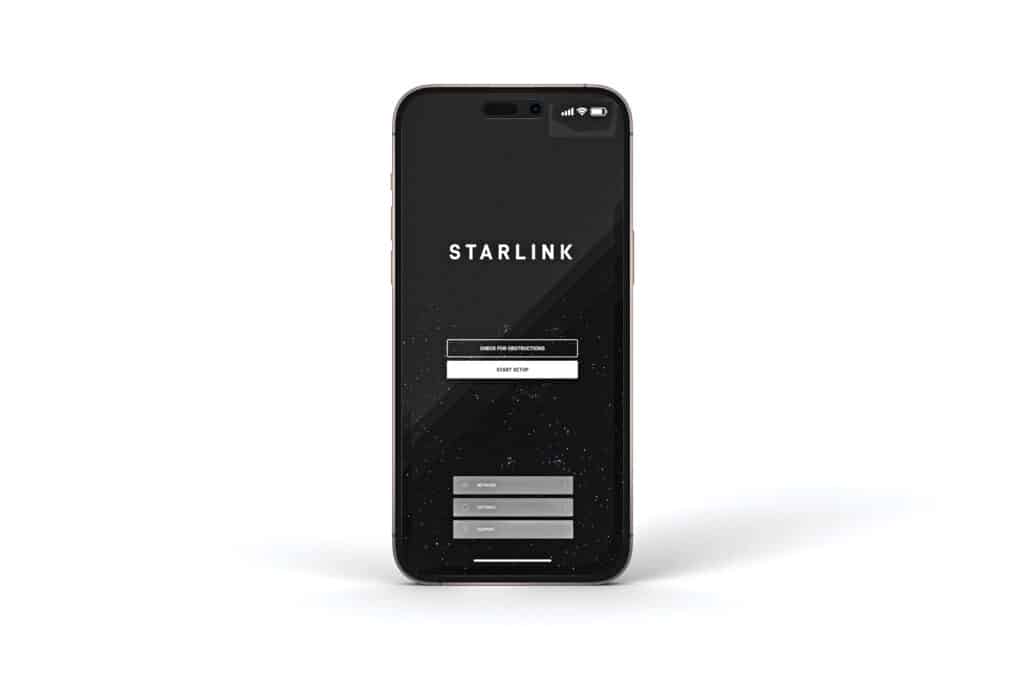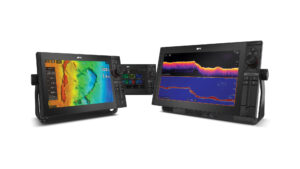
John Blackburn’s soon-to-be employers likely had little idea that he was aboard his Jeanneau 44 when they interviewed him for a C-suite position. Blackburn donned a jacket, blurred his background and used his Starlink Roam satellite-communications system to interview with two organizations while cruising Lake Superior’s remote Apostle Islands.
“I was able to connect with 110 percent confidence,” he says, adding that Wi-Fi and cellular communications weren’t dependable at his favorite anchorages. “I couldn’t have done that before.”
True market disruptions are rare. These days, they often involve Elon Musk, who has invested in everything from Tesla and OpenAI to SpaceX. With Starlink, Musk’s ever-growing constellation of low-Earth-orbit satellites (LEOs) combines with a supporting network and flat-panel dishes to give boaters faster connection speeds, lower latency and much lower costs than previous VSAT options.
Starlink’s origin story includes the date May 23, 2019, when a SpaceX Falcon 9 rocket released the first tranche of 60 Starlink LEOs. Today, Starlink has more than 4,500 LEOs aloft. The company plans to create a mega-constellation involving upwards of 42,000 LEOs.
Like all satellites, Starlink’s LEOs relay information to and from ground stations. Unlike most other satellites, however, these LEOs carry optical lasers that relay data among themselves, without ground stations.
Distance further differentiates Starlink from legacy VSAT networks, which typically use geostationary (GEO) satellites to ferry data. GEOs orbit 22,236 miles above the brine, which is almost 22,000 miles farther from the closest Starbucks than any LEO. This matters, in terms of latency: Starlink can purportedly send 70 round-trip transmissions in the time required for a single round-trip transmission to a GEO satellite. As of this writing, Starlink is advertising download speeds of 40 to 220 megabits per second and upload speeds of 2 to 25 Mbps, with less than 90 milliseconds of latency.
Unlike radome-enclosed antennas, Starlink uses flat-panel dishes composed of many individual elements. Each dish has an embedded GPS receiver and a gyro, which it uses to track orbiting LEOs. The dish electronically adjusts the power and phase of each element to steer its radio beam at the LEO. Losing satellite contact isn’t a big deal with Starlink, since the constellation’s architecture creates redundancy and resilience.

Starlink offers two plans that boaters have adopted. Starlink Roam costs $600 for a Standard flat-panel antenna, with airtime plans starting at $150 per month. Starlink Maritime costs $2,500 for a Flat High Performance dish, with airtime plans starting at $250 per month.
While Roam’s pricing is enticing, its motorized and self-orienting dish is tripod-mounted and is only designed for stationary use. Also, Starlink’s coverage map limits where users can operate their Roam systems. Bad actors can face penalties.
Starlink Maritime involves a larger, wedge-mounted antenna that’s motorless and designed to be used while underway. Starlink Maritime’s coverage map canvases large swaths of saline, and this coverage only improves with each new tranche of Starlink LEOs. Maritime systems are more expensive, but customers can expect high-performance connectivity almost anywhere.
Boaters say the system works. Blackburn, who landed a job over a Starlink connection, and Randal Briggs, who owns a Cruisers 445 Express that he keeps in Cambridge, Massachusetts, have Roam systems, while Robert McNeill installed a Maritime dish aboard Safari, his 72-foot Viking sport-fish yacht.
“It’s the same service as VSAT but at a better price point,” says McNeill, adding that before Starlink, he fished using an Iridium GO! hotspot. “People didn’t care about satcoms before.”
While Safari often operates 60 nautical miles offshore, McNeill says he hasn’t found any dead spots yet, and he usually can’t tell much difference between his Starlink service and his at-home connection. “When we’re around other boats with Starlink, the speeds slow a little bit, but it has no effect on what we’re doing,” he says. For him, Starlink earns its keep during offshore fishing tournaments, where before, he had to listen through VHF radio chatter to learn the tournament results. “Now, we know where we stand.”
McNeill calls his Maritime service “a fair value proposition,” but he admits there’s always a tipping point. “I hope they won’t change their pricing. It opens the door for a lot of people to have connectivity.”
Unlike with McNeill’s plan, Roam customers need to ensure that their usage areas parallel places where RVs roam. “It’s ideal where we are,” Blackburn says of the Apostle Islands. “I could be in a campground.”
Much of Puget Sound and San Francisco Bay are also covered; however, there are dead spots in New York’s Long Island Sound and the Chesapeake Bay. The Gulf of Maine, the Bay of Fundy in Canada, and the Gulf of Mexico are also problematic. The Great Lakes region is expected to be available before 2024.
Network performance and dependability matter to Briggs, who is an electrical engineer at MIT’s Lincoln Laboratory, which assessed Starlink from a security perspective for the government. “I sat in on that,” he says, “and then I went out and bought a Starlink that weekend.”
Briggs says that he and his wife aim to complete the Great Loop on their retirement cruise and that they like to remain within sight of land. For them, he says, Roam is a good solution. However, he recently found that Starlink had “upgraded” his service from $135 per month to $150. “That was a little bit aggressive,” he says, adding that prospective customers also need to be comfortable with Starlink’s largely self-help customer support. “I never talked to a human,” he says, explaining that he uses Starlink’s FAQ page and Google searches.
Overall, boaters interested in giving Starlink a try can visit the company’s website (there are no stores). It’s now possible for most boaters to don a jacket, blur the background and land a remote job from a remote anchorage.









